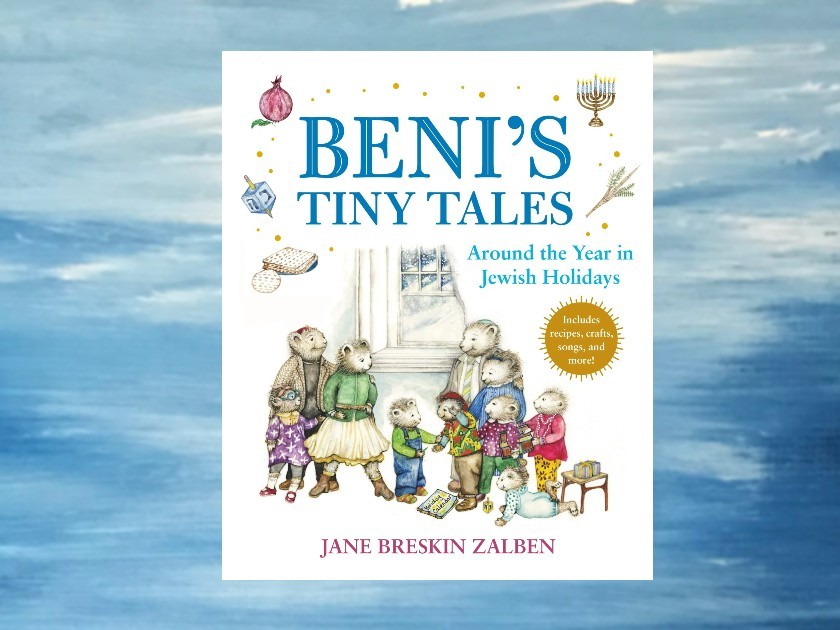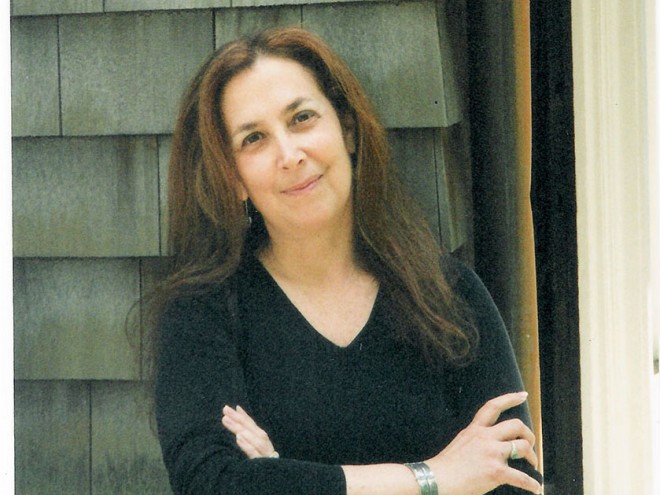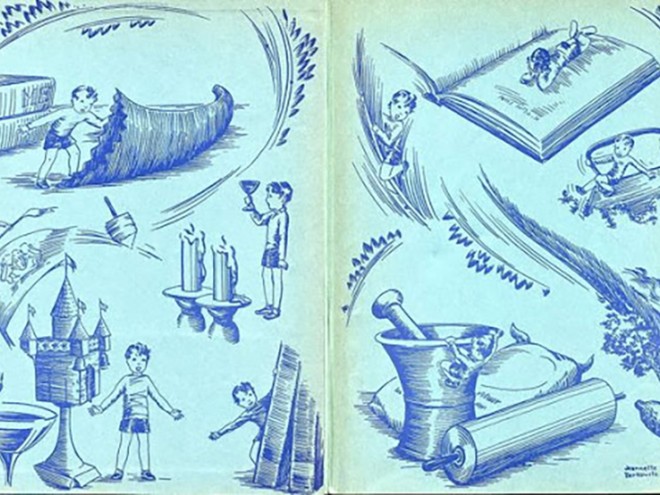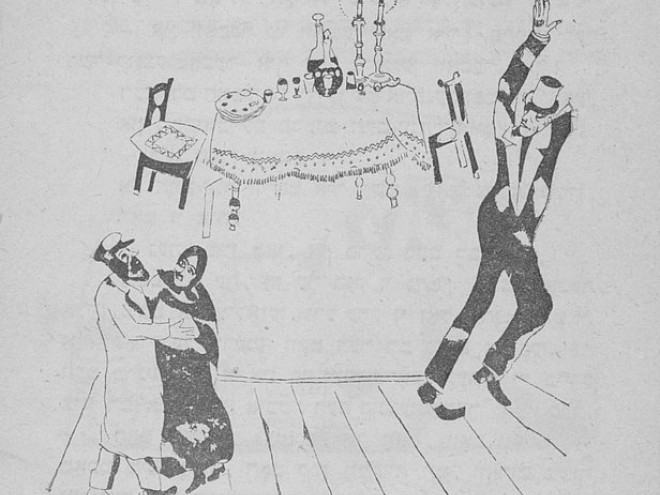
In 1988, a young bear named Beni debuted in Beni’s First Chanukah. This was followed by several more picture books about Jewish holidays starring Beni and his family. As author and artist Jane Breskin Zalben wrote at the time, it was not actually Beni’s first experience with the Festival of Lights, but rather “the first Chanukah Beni would be old enough to remember.” Thirty-five years later, readers continue to immerse themselves in Zalben’s exquisitely illustrated stories.
In the recent publication of Beni’s Tiny Tales: Around the Year in Jewish Holidays, Zalben has placed Beni and his family in our contemporary times. Beni has grown up. He is a husband and father; his extended family includes bears with partners and bears without, LGBTQ bears, elderly bears, and baby bears. In this new iteration of Beni, holidays and family remain central to the story. The book has an encyclopedic range, including a family tree along with a short explanation and encompassing narrative, graphic panels, recipes, craft projects, religious lore, and, of course, illustrations accompanying these stories.
One of Zalben’s most distinctive qualities as an artist is her use of detail and color, including influences ranging from Persian miniatures to Beatrix Potter. Her pictures are never static, and the Beni books capture the energy of children. We see this in the brief explanation of the Four Species associated with Sukkot (palm, willow, myrtle, and citron) which is followed by delicately painted icons of fruits and decorations. Tiny threads of cranberries, multicolored peppers, and purple grapes on the vine reward the reader’s focus, before moving on to the next page.
Both continuity and change have always been central to Zalben’s work.
Both continuity and change have always been central to Zalben’s work. Love of food and family, and the reassurance that small conflicts will be resolved through understanding, are ever present. Zalben’s latest, Beni’s Tiny Tales, is grounded in our changing era. When sisters Goldie and Molly reminisce about their childhood roles in the Purim play, their daughters Noa and Sophie consider the problem of Vashti’s ostracization once she defies her husband, Ahasuerus. Their mothers’ heated argument leads to pragmatic compromise: “Vashti was strong and Esther was wise.” A few unadorned words confirm the dignity of both women, and the new possibilities for Jewish girls today. On Rosh Hashanah, a female bear reads from the Torah; on Lag B’Omer, when Jewish boys have traditionally had their first haircut, cousin Sam is proud to apply the same festive ceremony to his daughter at the family picnic.
Each holiday is depicted separately, but the year of observance demonstrates many facets of Jewish life. In Beni’s Tiny Tales, the whole is greater than the sum of its parts. Even events that are not religious in nature become components of Jewish culture. Beni reminisces about the loss of a tooth while eating candied apples on Simchat Torah. Beni’s family uses a compost heap to help grow the herbs that will be used both for cooking and the Passover ritual. (When that celebration takes place in the crowded apartment of a single relative, everyone is accommodated by transforming a modest ping-pong table into the festive setting for the seder.)
Everyone deserves a place at the table here, both literally and figuratively. When a winter storm sends the family’s Hanukkah celebration online, a graphic novel-style page dedicates each detailed section of text to one or more relatives — each busily preparing a holiday dish. Beni’s cousin Max, a mischievous young bear with an impulse control issue in earlier books, is now happily living with his partner, Avi. After preparing their special Hanukkah treats of artichoke hearts and zeppole, Max tells Avi to “Mangia,” a sweetly humorous and loving direction. Older family members are consistently depicted as valuable participants. Even if great-grandma Mindel has difficulty negotiating the internet, she pragmatically phones in her recipe for latkes. In an interesting reversal of stereotypes, Mindel is health conscious. For Passover, she refuses to use chicken fat for her matzo balls, asserting that “I’m aiming for one hundred! And no kneidlach is going to stop me!”
Beni’s journey through the Jewish year concludes with “Late Night at the Cousins Comedy Club,” the entertainment setting turned into a child-friendly observance of Shavuot. Not exactly a session of all-night Torah study, the party requires a one-drink minimum of ice-cream soda or float, in honor of the holiday’s dairy recipes. But intergenerational memories reframe the boisterous occasion as an affirmation of membership in an extended Jewish family. Beni and Emma’s children associate the sleepover with an overnight in the Sukkah, bringing the Jewish year almost full circle. A baby is “wrapped in her blanket like a blintz,” and the chaotic fun is a reminder of a past Purim spiel and singing at a seder. Zalben’s jewel-toned portrait of “the whole family–gantse mishpacha,” summarizes her vision; a raised silver kiddush cup, a flowing tallit, a red kippah are small emblems within the embracing circle of tradition. In Zalben’s rendering, change becomes part of that embrace.
Emily Schneider writes about literature, feminism, and culture for Tablet, The Forward, The Horn Book, and other publications, and writes about children’s books on her blog. She has a Ph.D. in Romance Languages and Literatures.



